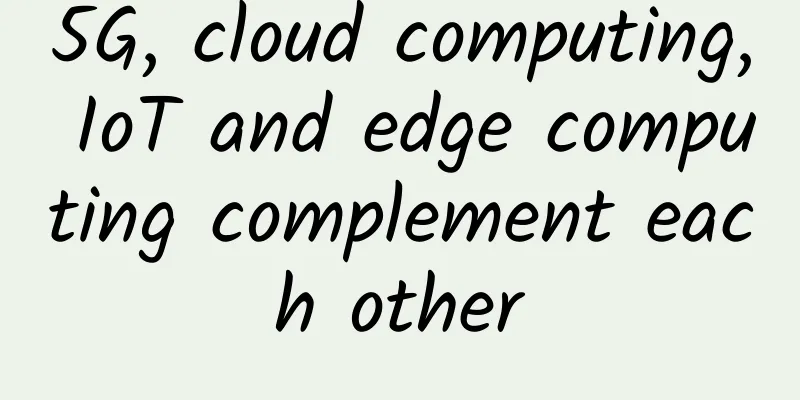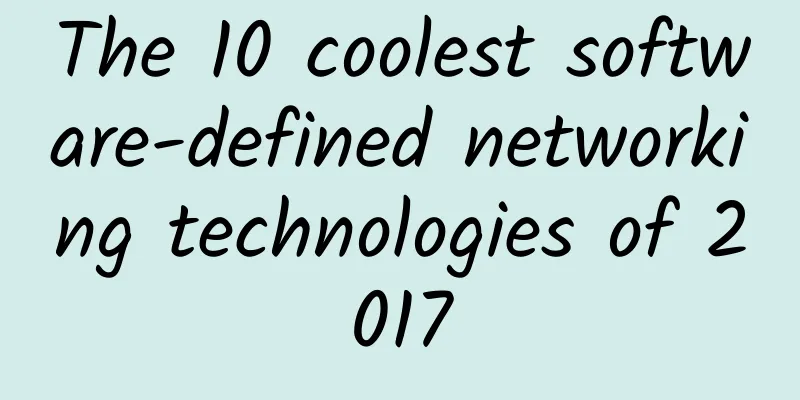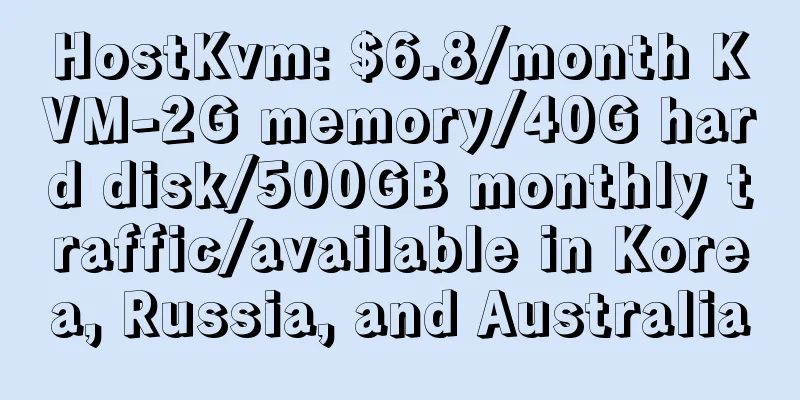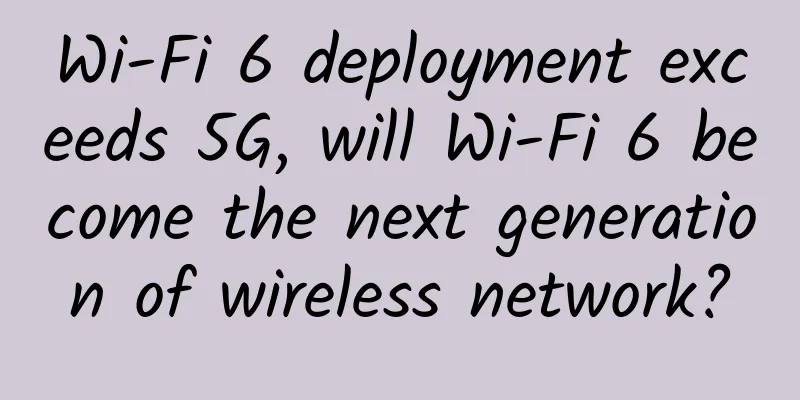5G, cloud computing, IoT and edge computing complement each other

|
Recently , the Ministry of Industry and Information Technology and the three major operators officially announced the launch of 5G services, and China has officially entered the 5G commercial era. What is the relationship between 5G and cloud computing? What new models of business innovation may there be in the 5G era? What is the position of the Internet of Things and edge computing in the 5G and cloud computing era? This article attempts to sort out these issues.
Innovation of 5G core network through cloud computing 5G technology improves data transmission bandwidth and speed, and increases the scale of device access, which means greater system capacity and an astonishing increase in data traffic, requiring a larger core network to adapt to it. In the 4G era, core networks usually use dedicated hardware. In the 5G era, just as enterprise networks have experienced a transition from dedicated servers to X86 server virtualization and cloud computing, the core network of data communications has also entered the virtualization era, using general-purpose devices such as X86 servers to replace dedicated hardware. This technology has a special name called vEPC (Virtualized Evolved Packet Core). Furthermore, directly using cloud computing to build the core network is more convenient, faster and less expensive, because there is already a considerable cloud infrastructure in the world that can be used on demand and can be scaled up or down. In the United States, there is a company called Afirmed Networks, which provides a solution for building a core network on AWS and won the Product Innovation Award. Transatel is a French mobile virtual network provider/integrator that is very advanced in IoT connection technology. It has provided commercial IoT connection technology in the United States, Western Europe and Japan, covering multiple fields such as consumer electronics IoT, connected cars and industrial IoT. The company was just acquired by NTT Communications Group this year. Bertrand Salomon, Deputy CEO of Transatel, commented on Afirmed Networks' vEPC solution: "Using Affirmed Networks' industry-leading, AWS-based, Internet-scale mobile core network solution will rewrite the rules of the industry." The reason why we say that the industry rules have been rewritten is because of this solution. Without the need for large-scale infrastructure investment like traditional operators, we can organize an operator-level core network, and it can be scaled on demand according to the number of users. Building edge networks through 5G and cloud computing Another company called Athonet. It builds an edge network based on 5G and cloud computing, which can be said to be another disruptive innovation. Athonet provides users with locally deployed Athonet edge nodes. Users can use Athonet edge nodes to build their own edge networks based on 5G networks. Athonet edge nodes are connected to and managed by the AWS cloud. Athonet edge nodes power local LTE base station clusters and allow all traffic in the edge network to be routed locally and within the firewall, which reduces latency, reduces network jitter (the network will not be fast or slow), increases security, is more economical, and supports demanding edge computing scenarios. By connecting to the AWS cloud, the edge network can achieve more complex functions such as authentication, mobility, and roaming. The disruptive nature of the above two technologies is that if access issues are not considered, or in areas where operators do not have coverage, enterprises can organize their own networks. If there are access issues, licensed operators can also provide such services to enterprises. Athonet has launched a SaaS service called BubbleCloud on AWS Marketplace, where users can pay based on usage. Realizing IoT business through 5G and cloud services A large number of devices can be connected through 5G, so 5G network has become an important connection technology for the Internet of Things. Cloud service providers represented by AWS have launched a series of cloud services suitable for IoT devices. For example, cloud services such as AWS IoT Core, AWS IoT Device Management, AWS IoT Events, AWS IoT Device Defender, AWS IoT Greengrass, AWS IoT Analytics, AWS IoT Greengrass ML Inference at Edge, etc., provide IoT device networking, device management, device control, security protection, data collection, data analysis, machine learning reasoning and other functions. Deploying these IoT services on the device side can not only save bandwidth resources and improve user experience, but also arrange computing power at the edge of the network, creating new space for third-party application integration. Beyond 5G networks, the cloud and edge collaborate in a variety of ways No network is omnipotent, and 5G is no exception. In some cases where the data is very large or the network is not covered, 5G may not be able to help, and you may need to consider special edge computing. The similarity between edge computing and the Internet of Things is that the network connection may not be real-time, and some computing processing needs to be performed on the terminal side first, and then the processing results are synchronized to the cloud. The difference between them is that when it comes to edge computing, its computing power is usually more powerful than that of IoT devices. But in a broad sense, the computing processing performed by IoT devices may also be called edge computing. From AWS's perspective, there are currently three main cloud services that support edge computing. The first is AWS's data migration device, Amazon Snowball Edge. It is a portable device with tens of TB of storage capacity and strong computing power, supporting cloud services such as storage and computing. It can be used to efficiently migrate large amounts of data to the cloud. For example, for environments without network connections such as ships, windmills, and remote factories, tens of TB of data can be efficiently transferred to Amazon Snowball Edge, and then the Amazon Snowball Edge device can be transported to the AWS cloud data center area to transfer data to the cloud. The second is AWS Outpost. It is similar to Amazon Snowball Edge, but the difference is that AWS Outpost supports more cloud services, and it supports most of AWS's cloud services. AWS Outpost can be deployed in the company's own data center or hosting room, and of course it can also be deployed in places without network connections, such as mines and remote factories. Using AWS Outpost locally in the enterprise is like using the AWS cloud, running applications, processing data, and then synchronizing the processing results of AWS Outpost with the cloud at an appropriate frequency. The third is AWS's unique satellite ground station service, Amazon Ground Station. It can receive data from specific customers through the satellite network at the location of the AWS cloud data center, which is the edge of the AWS global backbone network, and transmit it to the nearest AWS cloud data center for processing. Analyzing large amounts of data in the 5G era through cloud computing The 5G era will generate a large amount of data. According to a McKinsey report, by 2020, communications service providers will generate up to 44 ZB of data for 5G and IoT applications. This data can only be processed in a timely and effective manner through big data storage and analysis based on cloud computing and data analysis using artificial intelligence deep learning. McKinsey also pointed out that the use of AI-based electronic customer service will save telecom operators 30% of costs. Artificial intelligence and machine learning will help telecom companies analyze data, determine better operating strategies, optimize and automate business processes, and create a better customer experience for products and services. Cloud services represented by AWS have developed a large number of cloud services in big data analysis and machine learning, greatly reducing the technical threshold for big data analysis and machine learning and improving work efficiency. The above analysis is about the relationship between 5G, cloud computing, IoT and edge computing. Understanding these relationships will help us further think about and explore innovative applications in the 5G era. In general, 5G technology will be based on cloud computing and edge computing, and through the Internet of Everything, it will integrate the capabilities of intelligent sensing, data analysis and deep learning to fully realize the mobile intelligent IoT in the cloud era. By applying these new technologies to multiple fields such as smart transportation, smart home, smart production, industrial management IoT, smart agriculture, smart medical care, smart logistics, and smart social services, we can build an efficient public service and social operation system to improve all aspects of people's lives. |
<<: You have to know these eleven functions of the router
>>: On the first day of the High-Tech Fair, Huawei opens a new era of smart city twins with 5G+AI
Recommend
Experience the Serverless application programming model in cloud native scenarios
background Alibaba Cloud Serverless Kubernetes (A...
Three key considerations for upgrading your business to 5G
“While the discussion and hype around 5G has focu...
Sharktech: $99/month-2*E5-2670V2/32G memory/500G SSD disk/1Gbps unlimited traffic/Los Angeles data center
Sharktech is a long-established DC merchant in th...
The pitfalls of low-power wide area networks! Take a look at the stories of Sigfox and LoRa manufacturers
In the past decade of development of the communic...
As the 5G era approaches, mobile bearer networks face new challenges
As 5G commercialization approaches, 5G technology...
Easy to understand, this article will introduce you to the HTTP protocol?
1. What is http? Http protocol is Hypertext trans...
[5G Encyclopedia] How does 5G implement TDD?
The theme of this issue of 5G Encyclopedia is: Ho...
The 7 most in-demand tech jobs of 2018 — and how to hire them
From data scientists to data security experts, th...
Unity Online Technology Conference officially opens, with major upgrades to hardcore technology
Beijing, November 17, 2020 - On the evening of th...
HostDare offers a 20% discount on the CN2 GIA route in Los Angeles starting at $28.7/year
HostDare has updated new discount codes, offering...
Lenovo Debuts at Microsoft IoT Conference, Driving Business Intelligence Innovation with Smart IoT Devices
On December 3, the highly anticipated 2019 Micros...
How wireless technology will improve connectivity, efficiency and consumer experience in 2024
In 2024, wireless technology is expected to bring...
TNAHosting: 500GB hard drive VPS from $4 per month, 4GB memory VPS from $4 per month
TNAHosting recently held a Happy Near Year event,...
How to build your own CAN-bus application layer protocol
With the decline in the price of CAN-bus related ...
Is our 5G field booming? Many regions are actively deploying, and the future development potential is worth paying attention to
As an important direction for the evolution and u...









